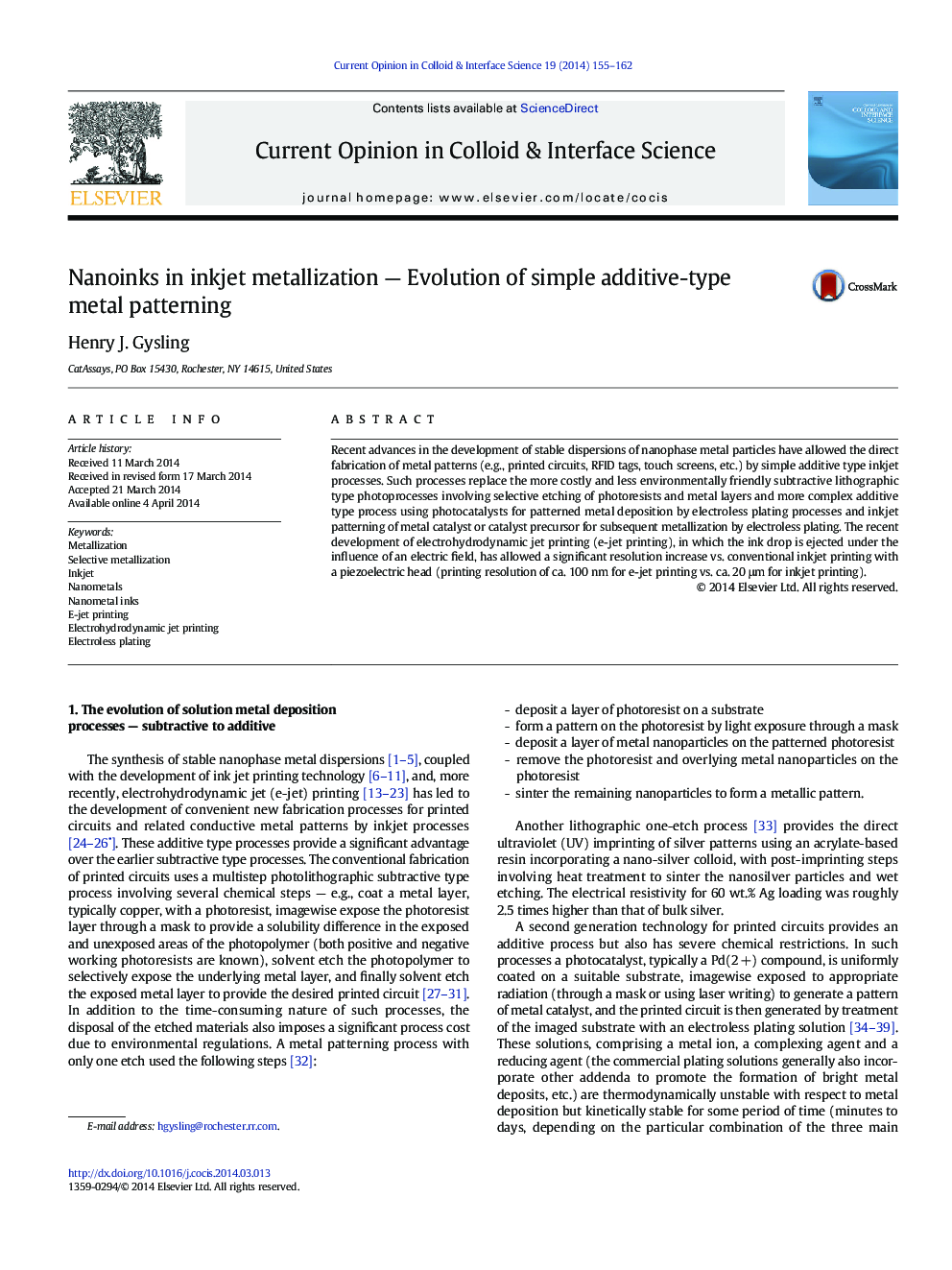| Article ID | Journal | Published Year | Pages | File Type |
|---|---|---|---|---|
| 603346 | Current Opinion in Colloid & Interface Science | 2014 | 8 Pages |
•Inkjet delivery of nanometal dispersions allows totally additive fabrication of metal patterns.•Synthetic methodology for dispersions of nanometals has allowed formulation of stable metallization inks.•Subtractive photolithographic methods are being replaced by totally additive inkjet metallization.•Low temperature sintering of inkjet deposited nanometal particles on polymeric supports is critical.•Polymer surface modification provides surface catalyst binding sites and good adhesion of the metal deposits.
Recent advances in the development of stable dispersions of nanophase metal particles have allowed the direct fabrication of metal patterns (e.g., printed circuits, RFID tags, touch screens, etc.) by simple additive type inkjet processes. Such processes replace the more costly and less environmentally friendly subtractive lithographic type photoprocesses involving selective etching of photoresists and metal layers and more complex additive type process using photocatalysts for patterned metal deposition by electroless plating processes and inkjet patterning of metal catalyst or catalyst precursor for subsequent metallization by electroless plating. The recent development of electrohydrodynamic jet printing (e-jet printing), in which the ink drop is ejected under the influence of an electric field, has allowed a significant resolution increase vs. conventional inkjet printing with a piezoelectric head (printing resolution of ca. 100 nm for e-jet printing vs. ca. 20 μm for inkjet printing).
Graphical abstractFigure optionsDownload full-size imageDownload high-quality image (86 K)Download as PowerPoint slide
